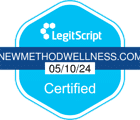In the intricate domain of mental health and addiction, the term “dual diagnosis” serves as a vital concept. It highlights the complex relationship between mental health disorders and substance abuse. Understanding dual diagnosis is crucial for effectively addressing the intertwined challenges individuals face. Delving into this topic reveals the intricate ways in which mental health struggles and substance misuse intersect, presenting unique hurdles for treatment and support. Recognizing and comprehending dual diagnosis is not just an academic exercise—it is essential for providing comprehensive care and assistance to those navigating these complex issues.
What is Dual Diagnosis?
Dual diagnosis refers to the coexistence of a mental health disorder and a substance use disorder (SUD) in the same individual. These conditions often exacerbate each other, leading to a cycle of dependency and worsening mental health symptoms. For instance, someone with depression may turn to alcohol or drugs as a form of self-medication, inadvertently intensifying their mental health struggles.
Common Mental Health Disorders Associated with Dual Diagnosis
Depression and Anxiety Disorders: Depression and anxiety frequently co-occur with substance abuse. Individuals may use drugs or alcohol to alleviate symptoms temporarily, but eventually, it can worsen their mental health.
Bipolar Disorder: People with bipolar disorder may experience manic highs and depressive lows. Substance abuse can trigger or exacerbate these mood swings, making it challenging to manage the disorder effectively.
Schizophrenia: Schizophrenia often coexists with substance abuse, as individuals may use drugs to self-medicate symptoms such as hallucinations or delusions. However, substance abuse can worsen psychotic symptoms and interfere with treatment.
Personality Disorders: Conditions like borderline personality disorder (BPD) or antisocial personality disorder (ASPD) are commonly associated with substance abuse. Individuals with these disorders may engage in impulsive behaviors, including drug or alcohol misuse.
The Vicious Cycle of Dual Diagnosis
Dual diagnosis creates a vicious cycle wherein substance abuse worsens mental health symptoms, leading to increased substance use as a coping mechanism. This cycle can spiral out of control without proper intervention, resulting in profound personal, social, and occupational impairment.
Challenges in Diagnosis and Treatment
Underreporting: Many individuals with dual diagnosis may not seek help or may not accurately report their substance use to healthcare providers due to stigma or fear of judgment.
Complexity: Treating dual diagnosis requires addressing both the substance use disorder and the underlying mental health condition simultaneously, which can be challenging due to the complexity of these issues.
Comorbidity: Dual diagnosis often involves comorbidities with other medical conditions, further complicating diagnosis and treatment.
Effective Treatment Approaches
Integrated Treatment: Integrated treatment approaches that address both mental health and substance use disorders concurrently have shown the most promise. These may include therapy, medication management, and support groups tailored to individuals with dual diagnosis.
Holistic Care: Holistic approaches that consider the individual’s physical, emotional, and social well-being are essential for long-term recovery. This may involve lifestyle changes, stress management techniques, and building a dedicated support network.
Dual Diagnosis Support Groups: Peer support groups specifically for individuals with dual diagnosis can provide a sense of community and understanding, reducing feelings of isolation and stigma.
Breaking the Stigma
The stigma attached to mental illness and substance abuse often stops people from seeking help or discussing their challenges openly. It is essential to break down these barriers to create a supportive environment where individuals feel safe accessing the care they need. By challenging societal attitudes, we can encourage open conversations, promote empathy, and empower people to prioritize their well-being. This, in turn, enables them to access the necessary support systems for recovery and resilience.
Conclusion
Dual diagnosis represents a complex intersection of mental health and substance abuse, presenting unique challenges for diagnosis and treatment. By understanding the interplay between these conditions and adopting integrated, holistic approaches to care, we can provide effective support for individuals navigating the complexities of dual diagnosis, fostering hope for recovery and improved quality of life.
Dual Diagnosis FAQ
How common is dual diagnosis?
Dual diagnosis, the co-occurrence of substance use disorders and mental health conditions, is a prevalent and complex issue in healthcare. Studies indicate that approximately 50% of individuals with severe mental disorders are affected by substance abuse, while about 37% of alcohol abusers and 53% of drug abusers also have at least one serious mental illness. Additionally, among individuals with substance use disorders, around 29% meet the criteria for a coexisting mental health disorder. These statistics underscore the significant overlap between substance abuse and mental health issues, highlighting the importance of comprehensive assessment and integrated treatment approaches to address the complex needs of affected individuals.
What is the most common dual diagnosis?
The most prevalent dual diagnosis, observed across numerous clinical settings, is the co-occurrence of substance use disorders with mood or affective disorders, particularly depression and anxiety. This combination often presents a complex challenge for both individuals and healthcare providers, as each condition can exacerbate the other, leading to a heightened risk of relapse and prolonged recovery periods. Moreover, the intertwined nature of substance abuse and mood disorders underscores the importance of integrated treatment approaches that address both aspects simultaneously, thereby improving outcomes and enhancing overall well-being for those affected.
Is there a cure for dual diagnosis?
While dual diagnosis presents a complex clinical scenario, characterized by the coexistence of substance use disorders and mental health conditions, it is important to note that there is not a singular “cure” for this phenomenon. Instead, effective management typically involves a multifaceted approach tailored to individual needs. This approach may include psychotherapy, medication management, substance abuse treatment programs, and ongoing support systems. The goal is to promote recovery, manage symptoms, and improve overall quality of life. While remission and symptom control are achievable outcomes, the journey toward managing dual diagnosis is often ongoing, emphasizing the need for comprehensive, personalized care strategies.







